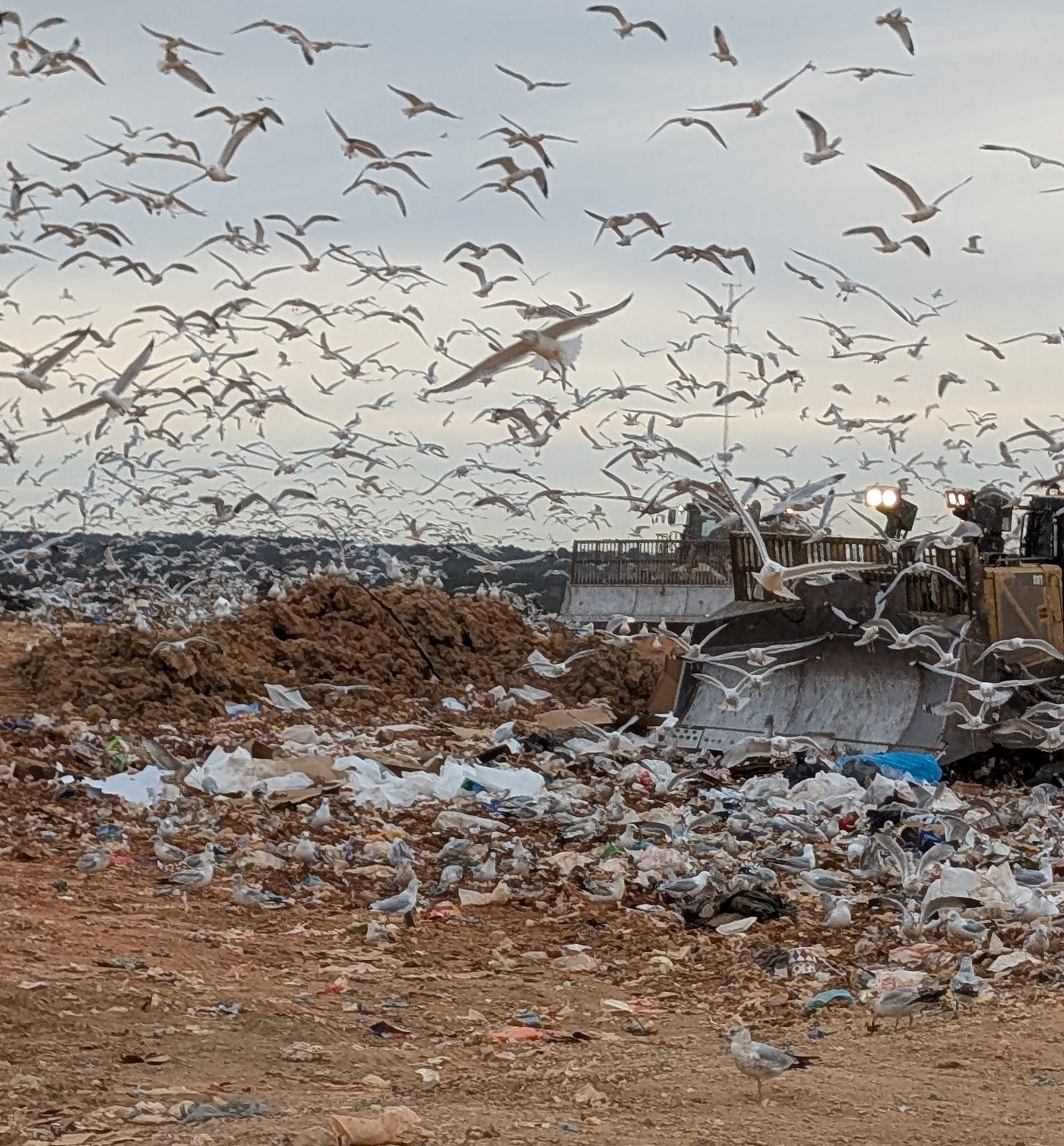Dumping on Holly Springs: The South Wake Landfill - Past, Present, and Future
This four-part series explores the South Wake Landfill’s past, present operations, environmental consequences, and future.
Introduction: A four-part series
Holly Springs has been home to Wake County’s largest landfill for decades, shaping the town’s history, environment, and community concerns. This four-part series explores the South Wake Landfill’s past, present operations, environmental consequences, and future. Part 1 covers the history of waste disposal in Holly Springs, while Part 2 examines landfill operations and challenges. Part 3 explores environmental and health impacts, and Part 4 looks ahead to its closure and future land use. As Holly Springs grows, the landfill remains a pressing issue, raising questions about long-term sustainability and Wake County’s waste management strategy.
Part 1: A History of Landfills in Holly Springs and the South Wake Landfill
Holly Springs, North Carolina, has long been a focal point for Wake County’s waste disposal efforts, a history that has raised environmental concerns and generated community resistance. The placement of landfills in the area has been a contentious issue, particularly for predominantly Black communities that found themselves living near waste facilities without their input.
The town’s association with landfills dates back to the 1950s. In 1953, the Elwood Pines Dump was established on a 3.75-acre site along Newspaper Way, operating until 1973. A 2010 environmental assessment found debris such as 55-gallon drums, concrete, metal, asphalt, and other waste still present at the site, raising concerns about long-term contamination. In 1955, the Holly Springs Dump opened on a 13-acre site off Bass Lake Road, continuing until 1974. Environmental investigations later revealed chlorinated solvents contaminating groundwater, prompting further assessment by state agencies.
Another major site, the Old Holly Springs Dump/Cary Sanitary Landfill, operated from 1955 to 1975 along Holly Springs Road. This 49.26-acre facility accepted municipal waste from Cary, averaging 3,050 cubic yards per month. Today, much of this area has been developed into residential neighborhoods, including the Devil’s Ridge Golf Course community.
By the late 1990s, Wake County planned a 471-acre municipal landfill in Holly Springs to accommodate growing waste disposal needs. The land was purchased from Triangle Plywood Corporation on September 12, 1974, initially for a landfill expansion, but it was later designated for the South Wake Landfill. Despite years of legal battles and community protests, the county moved forward with the project, and the landfill officially opened in 2008.
Today, the South Wake Landfill serves more than 400,000 households, with an average of 1,700 tons of waste delivered daily. The landfill spans 90 acres but is set to expand to 180 acres as it nears full capacity. Although Wake County has implemented gas collection systems and odor control measures, concerns about air quality, environmental impact, and long-term consequences for Holly Springs remain significant for residents.
Despite Holly Springs’ transformation into a thriving community, its identity remains linked to Wake County’s waste management system. As the landfill grows, residents continue to push for greater accountability, stronger environmental protections, and a clear vision for the future of waste disposal in the region.
Coming Soon:
Part 2: The South Wake Landfill Today – Operations, Management, and Challenges
Part 3: The Environmental and Health Impact of the Landfill
Part 4: The Future of Waste Management in Wake County



My wife and I often remark when returning from vacation that you always know you’re almost home when you start smelling trash.